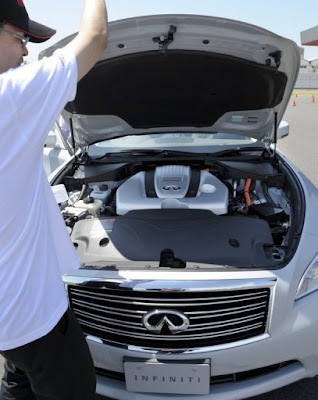 If you enjoyed reading the recent post on low-energy Futuristic Lightbulbs that can last up to 17 years, then this new idea should lighten your day. Given that almost 2 billion people live without electricity, entrepreneur Stephen Katsaros has invented a solar powered light bulb in hopes of bringing light to the developing world.
If you enjoyed reading the recent post on low-energy Futuristic Lightbulbs that can last up to 17 years, then this new idea should lighten your day. Given that almost 2 billion people live without electricity, entrepreneur Stephen Katsaros has invented a solar powered light bulb in hopes of bringing light to the developing world.The 6-ounce Nokero bulb absorbs the sun's energy into a replaceable battery by way of four photovoltaic panels, which gives power to five white LEDs inside the weatherproof, plastic casing. The bulb will glow for four hours when fully charged, and a full day outside will provide enough energy for about two hours of light. Currently they are $15 each, but the price will drop for bulk orders.
Although the bulbs will likely appeal to the outdoorsy type or patio lovers, Katsaros' major focus is making them available to those in the developing world. "We are trying to reduce the cost so that the 2.8 billion people in the world who make less than two dollars a day can afford this." Nokero bulbs could provide a clean and safe alternative to the commonly used kerosene lanterns, which emit toxic fumes and start fires responsible for over 1 million deaths worldwide.



 Fishermen in Thailand have recently encountered the problem of diminishing local fish populations due to overfishing. Hoping to remedy the situation, they petitioned to their Thai Queen for support. She responded by authorizing the dumping of 25 decommissioned army tanks, 273 old train cars, and 198 garbage trucks in the ocean to create artificial reefs.
Fishermen in Thailand have recently encountered the problem of diminishing local fish populations due to overfishing. Hoping to remedy the situation, they petitioned to their Thai Queen for support. She responded by authorizing the dumping of 25 decommissioned army tanks, 273 old train cars, and 198 garbage trucks in the ocean to create artificial reefs. Historical records indicate an improvement in breathing of miners from Roman and medieval times. In 1843, Dr. Feliks Boczkowski, a Polish physician stationed at a salt mine, noticed that miners there did not suffer from lung diseases. During WWII, Dr. Karl Hermann Spannagel noticed an improvement in his patients after they hid in salt caves to escape heavy bombing. Most recently, in the 1950s it was documented that Polish mine workers rarely suffered from tuberculosis.
Historical records indicate an improvement in breathing of miners from Roman and medieval times. In 1843, Dr. Feliks Boczkowski, a Polish physician stationed at a salt mine, noticed that miners there did not suffer from lung diseases. During WWII, Dr. Karl Hermann Spannagel noticed an improvement in his patients after they hid in salt caves to escape heavy bombing. Most recently, in the 1950s it was documented that Polish mine workers rarely suffered from tuberculosis.




